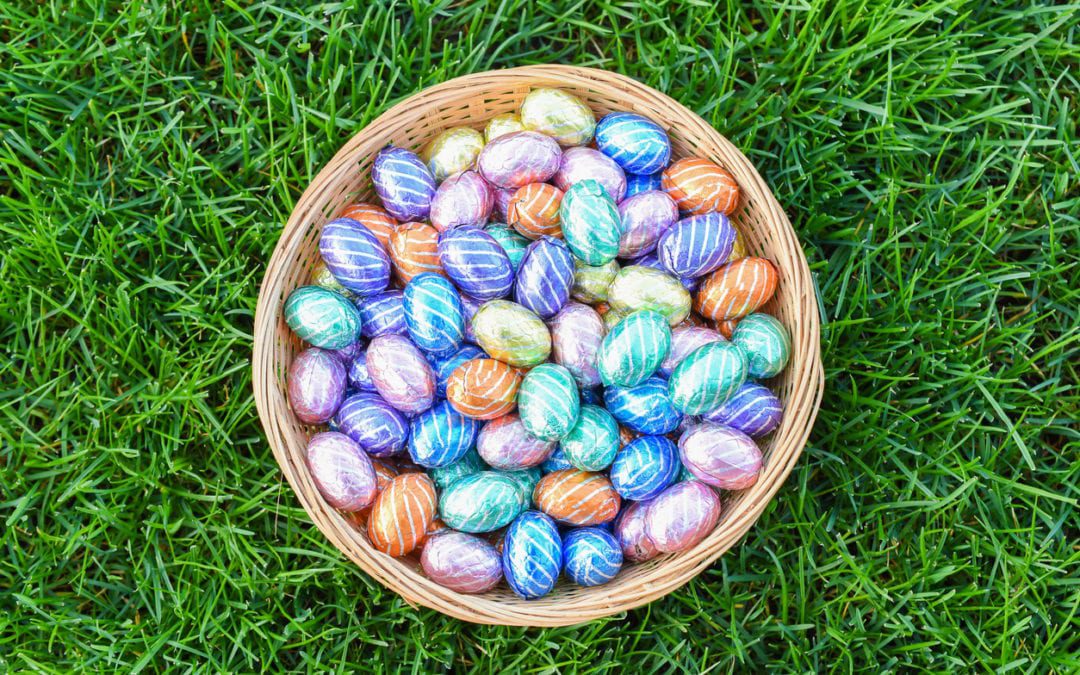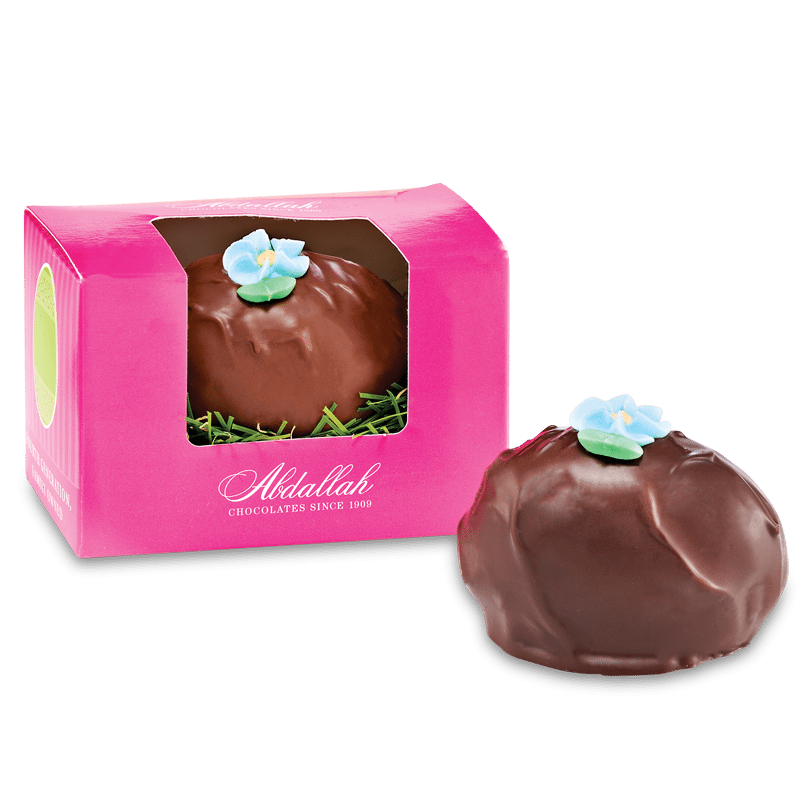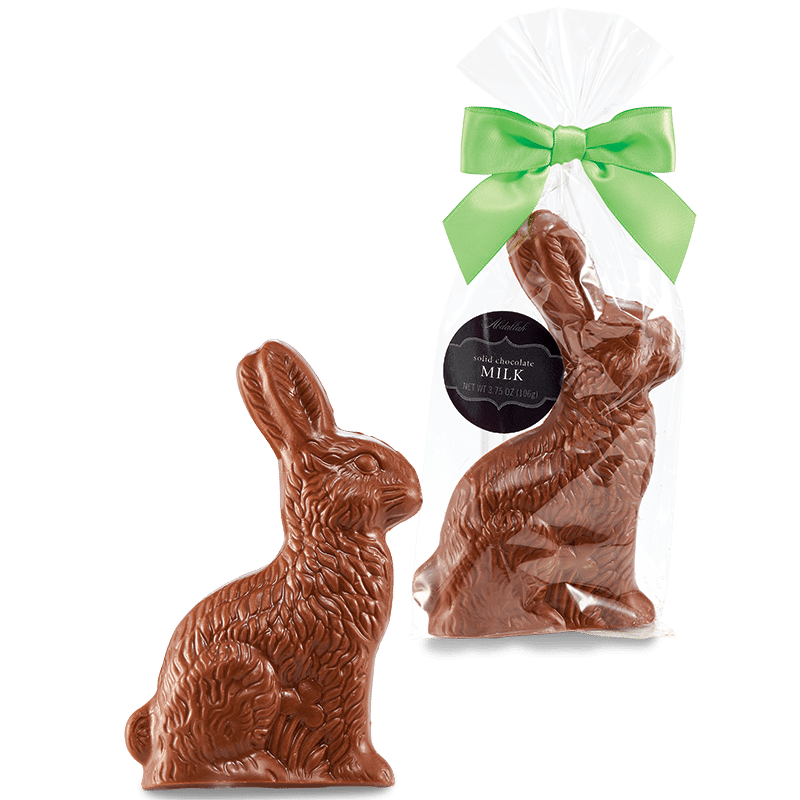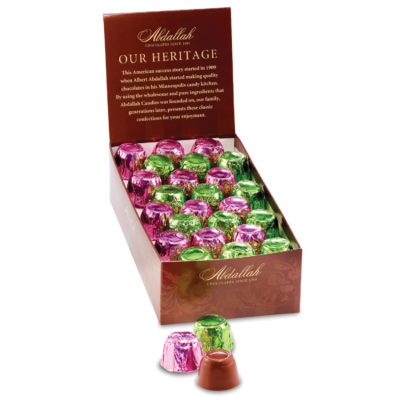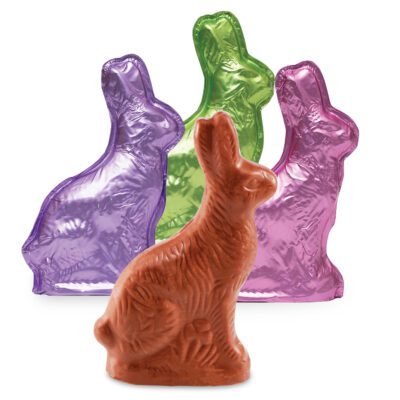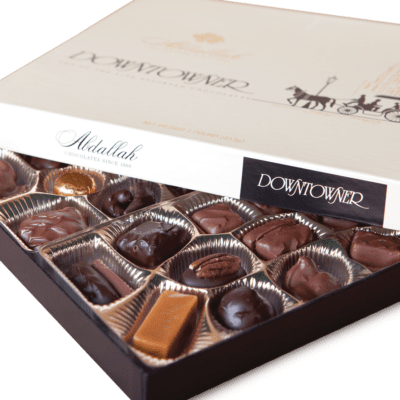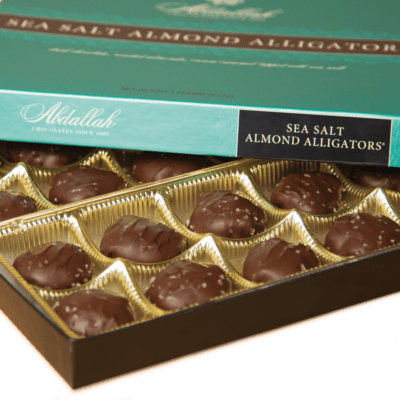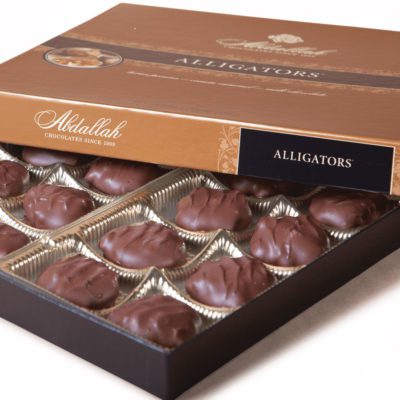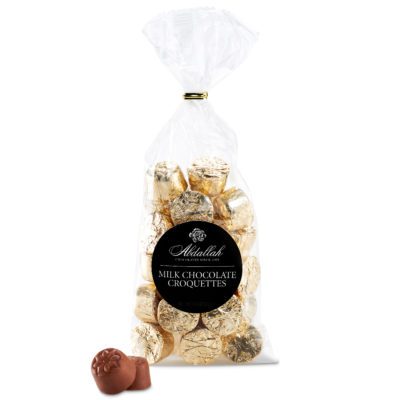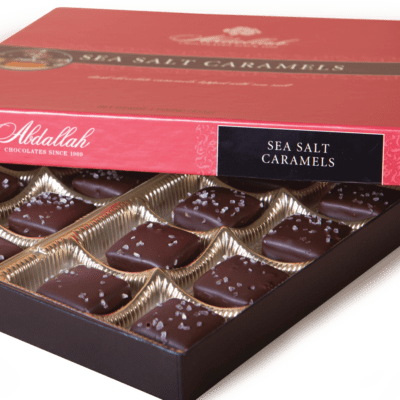Easter Candy is a delicious treat that many people wait for all year, but have you ever wondered why we give chocolate on Easter? While Easter is an important holiday in Christianity, people of all religions will partake in newer Easter traditions such as dyeing eggs and Easter Egg Hunts. These secular celebrations have rich histories that are worth remembering while you go shopping for Easter Candy this spring!
Each Easter, the Easter Bunny arrives and fills baskets with candy, along with hiding eggs around the house or nearby park. Children and adults participate in Easter Egg Hunts and snack on the brightly colored eggs and candies that remind them of spring. The season has become one of the biggest for candy gifts, and traditions are still developing.
Origin of Easter Candy
The Easter Bunny has been the recognizable symbol of Easter ever since the 1700’s. The infamous rabbit was brought to America by German Immigrants. It is believed that a rabbit was chosen because it was an ancient symbol of new life, a theme that goes perfectly with springtime in cold climate. Other reports say that early Germanic culture believed egg-laying rabbits introduced Spring. The bunny originally brought colorful eggs, but the tradition quickly expanded to include chocolate and other gifts. Originally, children would leave carrots out for the bunny in case he needed a treat (similar to cookies for Santa).
German immigrants were also the originators of the iconic edible Easter egg, which was first made of sugar and pastry in the mid 1800’s. Eggs were chosen because the German Easter Bunny, called “Osterhase,” would lay the eggs given to the children opposed to giving them a basket. Eggs were also a symbol of good luck and new life, and were relatively easy to make due to their shape.
Candy eggs became wildly popular in the mid 1800’s, and Easter traditions picked up around the same time. By the late 1800’s, major U.S. candy makers began offering chocolate eggs both hollow and filled, along with other unique flavors. By the early 20th century, improvements in equipment and increased demand led candy makers to produce unique Easter Candy on a much larger scale. Instead of handcrafted eggs, we saw the creation of posed rabbits, birds, nests, and many other chocolate designs. The early 20th century also saw jelly beans be added to the Easter tradition.
Since then, a basket full of unique creations has become a beloved tradition. Easter baskets are filled with classic chocolate eggs, bunnies, and so much more.
New Easter Candies have been added and lost throughout the years, with Marshmallow flavors on the rise and bright pastel colors included in everything. The one constant in the new candies is the color scheme, as Easter Candies go hand-in-hand with the return of spring.
More Easter Candy History
- Chocolate Eggs continue to be the most popular candy associate with Easter. They are also the oldest candy tradition, having been made in Germany in the early 19th century.
- Particularly since the growth of the internet, a fierce debate has arisen about the proper way to eat a chocolate bunny. Studies show that 76 percent of people eat the ears on chocolate bunnies first.
- It is believed that the end of Lent also has a role in the popularity of Easter Candy. Many Christians swear off sweets for Lent, meaning Easter marks the first day in over a month that they can eat chocolate.
- Most years, Easter yields the second most candy gifts given, only behind Halloween.
- The largest chocolate Easter Egg ever is heavily contested. History.com recognizes an 8,000 pound egg as the largest, while the Guinness Book of World Records marks a 16,000 pound egg!
- The largest Easter Egg Hunt contained over 500,000 eggs, and took place in Florida.
- Easter Candy has grown consistently among non-Christians due to its ties to spring. In the 1950’s, Easter Candy started taking forms of various springtime shapes, including birds and flowers. This helped the tradition grow for all lovers of Springs.
More Easter Bunny History
- The Easter Bunny was brought to the United States by German immigrants, and is a symbol of new life for spring.
- German immigrants told stories about a white hare who would leave brightly behind colored eggs for all good children on Easter morning.
- While Germans would usually leave out stocking and hats to get filled by the Easter Bunny, American children built nests out of leaves and sticks in their garden to be filled. This led the tradition outdoors, which later developed into an Easter Egg Hunt to find where the Bunny left their goodies.
- Baskets began being used in the late 19th century, around the same time as the Easter Bunny gained its iconic name. The use of baskets also led to the tradition of giving more than just chocolate eggs.
Easter Candy History – Specific Candies
While chocolate eggs are the original and most popular Easter Candy, a number of other candies are also iconic in early Spring.
Chocolate Bunnies
Chocolate Bunnies are the most common molded chocolate for Easter, and are also the first design made. While they were first handcrafted in the 1830’s and 1840’s, they became commonplace in the 1880’s. At that time, chocolate was much more difficult to craft. Innovations to the industry such as molding machinery have made shaped chocolate much easier to produce, allowing Americans to eat chocolate bunnies to their heart’s content. Today, we offer chocolate bunnies in a variety of flavors, including milk chocolate, dark chocolate, white chocolate, and peanut butter.
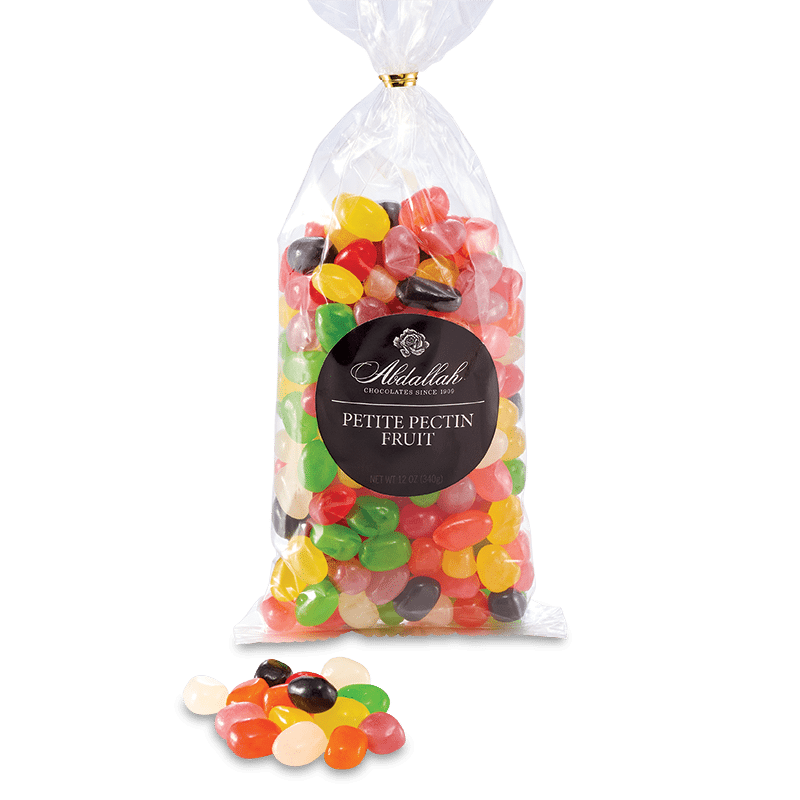 Jelly Beans
Jelly Beans
Jelly Beans are an offshoot of an old delicacy called Turkish Delight. Despite only being around since the 1890’s jelly beans have quickly become associated with Easter due to their vibrant colors and egg-like shape. The shape and color of the candy allows it to be popular at this time of year, while the delicious flavor keeps them in fashion during other seasons. We offer two main types of Jelly Beans during Easter time: Traditional fruit, and spiced.
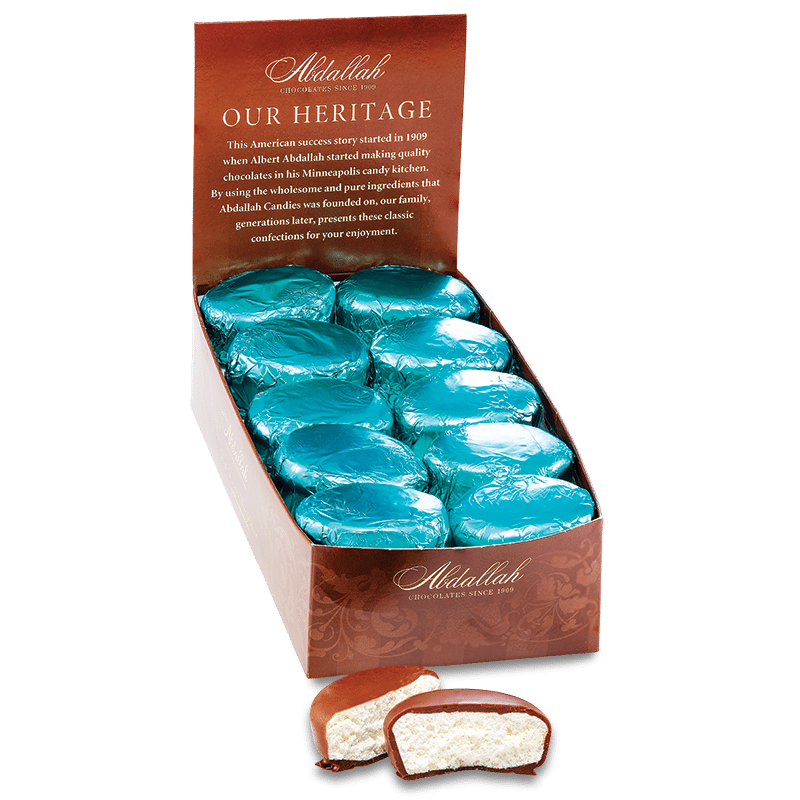 Marshmallow Flavors
Marshmallow Flavors
Unlike other candy-giving holidays, Easter isn’t associated with many flavors. Instead, it tends to be focused on shapes and colors. Still, Marshmallow is a flavor that has gotten associated with Easter, especially due to the creation of peeps in the 1950’s. Marshmallow is paired with either sugar or chocolate, and is one of the newest Easter traditions. It is only associated with Easter because of the shapes that the marshmallows are typically formed into, but we love it nonetheless! Whether it’s marshmallow eggs or bunny tails, we have the flavor you’re looking for!
Other Candy
Easter is such a popular candy-giving holiday that candy shops everywhere turn their year-round favorites into seasonal treats. Check out our complete spring selection to find a treat that is perfect for Easter!
We hope you learned a little bit about Easter Candy History and why we give chocolate on Easter. We would love to help make your holiday a gourmet experience. Happy spring!
-
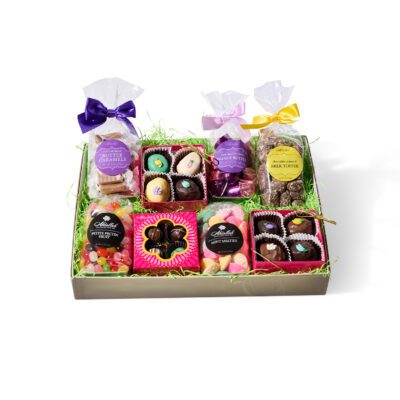
Family Easter Basket in a Box
$65.00 -
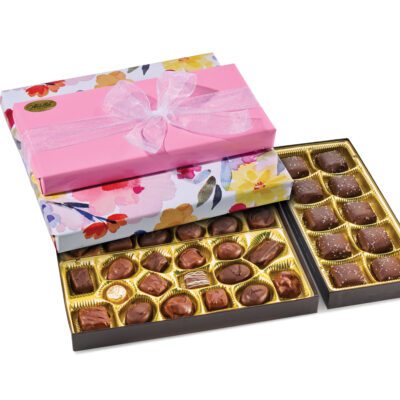
Spring Tiers
$42.95 – $54.50 -

Select Assortment
$15.50 – $27.95 -
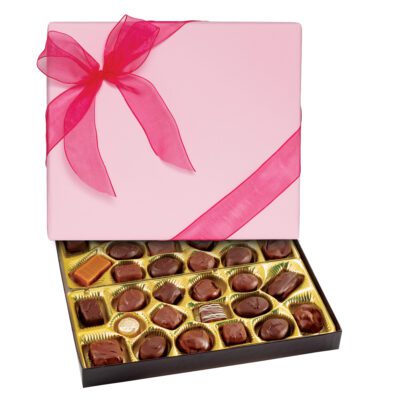
Pink Spring Exclusive Selection
$16.50 – $29.50 -
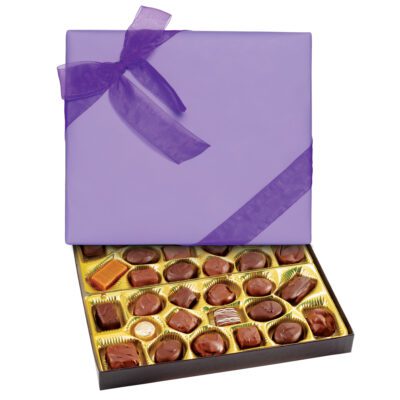
Purple Spring Exclusive Selection
$16.50 – $29.50 -
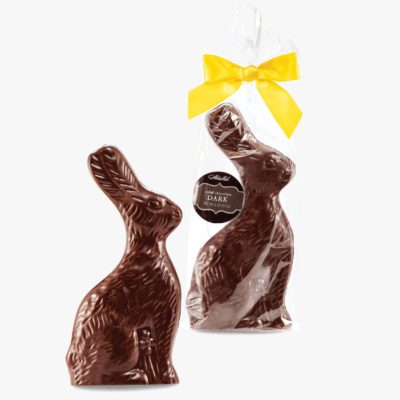
6 oz Dark Chocolate Rabbit
$7.95 -
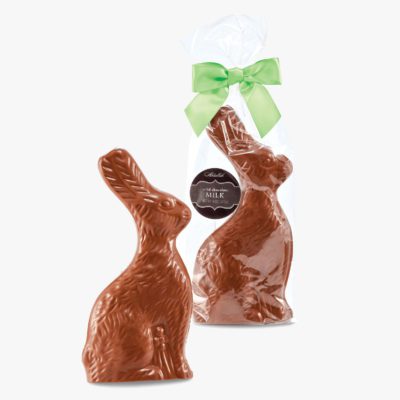
6 oz Milk Chocolate Rabbit
$7.95 -
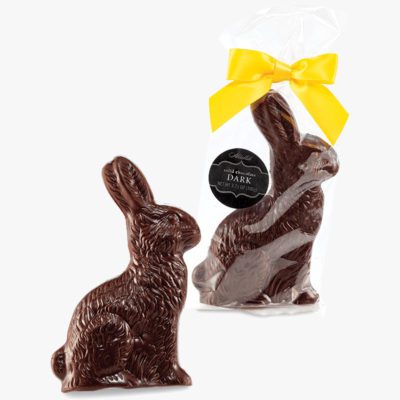
4.25 oz Dark Chocolate Rabbit
$6.50 -

4.25 oz Milk Chocolate Rabbit
$6.50


